The Definitive NetSuite ERP Implementation Roadmap
A NetSuite ERP implementation is the process of deploying Oracle NetSuite’s cloud-based enterprise resource planning system within an organization. This comprehensive process typically follows these key phases:
| NetSuite Implementation Phase | What Happens | Typical Duration |
|---|---|---|
| 1. Findy & Planning | Requirements gathering, team formation, goal setting | 1-2 months |
| 2. Design | System configuration planning, process mapping, gap analysis | 1-2 months |
| 3. Build & Configure | System setup, customizations, integrations | 2-3 months |
| 4. Testing | User acceptance testing, data validation, issue resolution | 1-2 months |
| 5. Go-Live & Support | Deployment, hypercare support, optimization | Ongoing |
If you’re preparing for a NetSuite implementation, you’re about to start on a transformative journey. The statistics paint a clear picture: 80% of customers initially feel unhappy with their ERP implementation, 57% of ERP implementations take longer than expected, and 54% go over budget. But it doesn’t have to be this way.
A well-executed NetSuite ERP implementation can be a game-changer for your business, integrating finance, operations, inventory, and customer management into a single platform that provides real-time visibility and streamlined processes.
Think of implementation like remodeling your house – you need a solid blueprint, the right team, and your continued involvement throughout the process. Without proper planning and execution, you risk joining the nearly 75% of ERP implementations that Gartner reports as failures.
I’m Louis Balla, CRO and partner at Nuage, with over 15 years of experience in digital change and NetSuite ERP implementation. My expertise in streamlining business processes and integrating third-party applications with NetSuite has helped numerous manufacturing businesses successfully steer their implementation journeys.
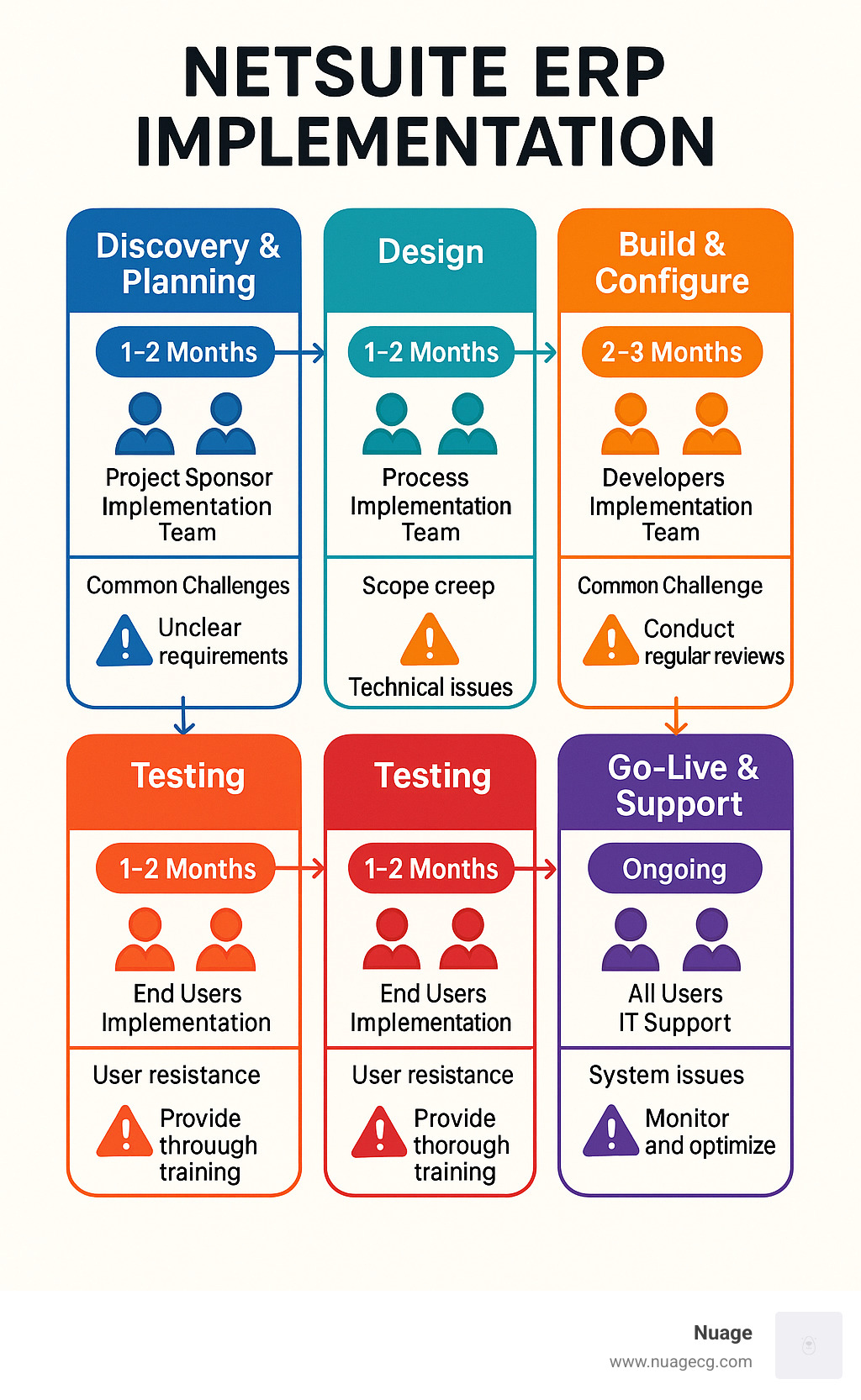
Quick NetSuite ERP implementation definitions:
– NetSuite data migration
– NetSuite for small businesses
– NetSuite software optimization
Why Organizations Choose NetSuite & What You Get
When businesses reach a certain point in their growth journey, spreadsheets and disconnected systems just don’t cut it anymore. That’s where NetSuite comes in. As a true cloud-based ERP solution, NetSuite liberates you from expensive hardware investments while giving your team the freedom to work from anywhere—something that’s become non-negotiable in today’s flexible work world.
What really sets NetSuite apart is how it brings everything together under one digital roof. Imagine having all your business data flowing into a single system, creating what we like to call your “single source of truth.” And with AI capabilities woven throughout the platform, NetSuite doesn’t just store your data—it actively helps you make sense of it, suggesting smart actions and uncovering insights you might have missed.
As one controller told us after their NetSuite ERP implementation: “We could have handled growth without an ERP system, but we would have been forced to hire a lot more people.” This perfectly captures the efficiency boost most companies experience.
Perhaps the most beautiful thing about NetSuite is how it grows with you. Start with just what you need today, then add capabilities as your business evolves—no disruptive migrations required. And for companies with multiple locations or international operations, NetSuite OneWorld handles different currencies, tax rules, and financial consolidation without breaking a sweat.
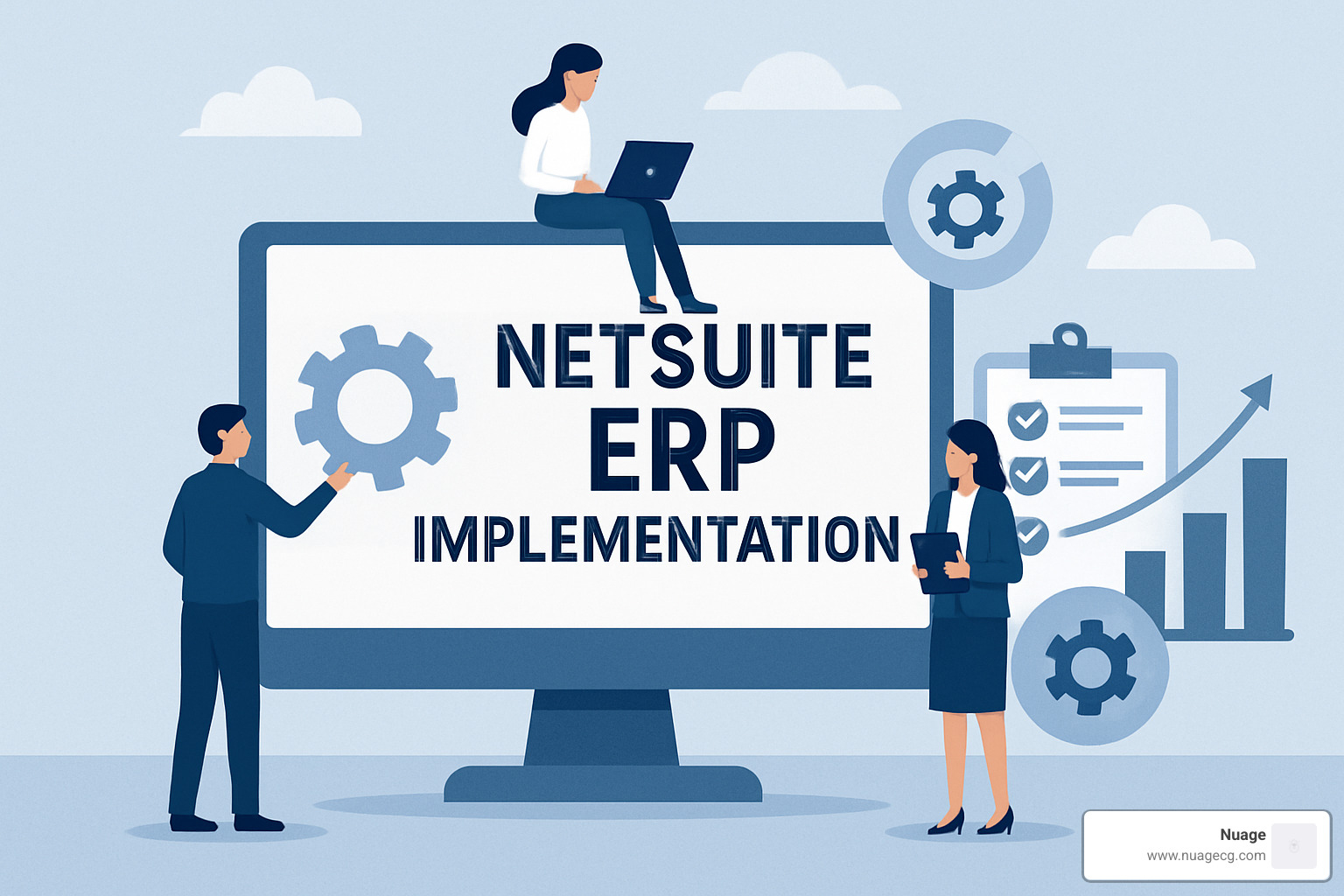
Core Feature Snapshot
At its heart, NetSuite delivers a comprehensive set of tools that work seamlessly together:
Financial Management transforms how your accounting team operates by streamlining processes, speeding up month-end close, and offering real-time visibility into your company’s financial health. From general ledger to fixed assets, everything’s connected.
Inventory Management gives you x-ray vision into your stock across all locations. With automated replenishment and demand planning, you’ll keep just the right amount of inventory—not too much, not too little.
Order Management creates a smooth path from quote to fulfillment across all your sales channels, eliminating those frustrating manual bottlenecks that slow down your team and irritate customers.
Procurement puts your purchasing processes on autopilot, helping you build better vendor relationships while keeping spending under control.
Supply Chain Management provides that elusive end-to-end visibility from suppliers to customers, helping you plan better and execute more consistently.
Analytics and Reporting turns your data into actionable insights through customizable dashboards and real-time reporting that anyone in your organization can understand.
Business Value & ROI Drivers
The true value of a NetSuite ERP implementation extends far beyond just streamlining operations. The impact ripples throughout your entire organization:
Your team becomes dramatically more productive. Just ask Ronin Gallery, who doubled employee productivity and now runs 50 exhibitions yearly with just four people. Or N&N Moving Supplies, who cut payroll processing time by a whopping 84%.
Your costs go down as manual processes get automated and redundant systems disappear. One of the biggest savings? No more paying for multiple systems and the costly integrations needed to make them talk to each other.
Your business becomes more agile. In today’s unpredictable business environment, the ability to pivot quickly is priceless. NetSuite’s flexible configuration and regular updates ensure you can adapt when market conditions shift.
Your growth potential expands. With a system that scales as you grow, technology never becomes the bottleneck holding back your expansion plans.
Your business resilience strengthens. Cloud-based operations mean your team can keep working even during disruptions, and real-time visibility helps you respond faster to challenges.
The numbers back this up—research shows that 85.5% of organizations report improved productivity after implementing systems like NetSuite. That’s not just an incremental improvement; it’s changeal.
Ready to learn more about finding the right partner for your implementation journey? Visit our NetSuite ERP Implementation Partners page for expert guidance.
Free Product Tour: Learn How NetSuite Can Streamline Your Business
NetSuite ERP Implementation Phases
A successful NetSuite ERP implementation isn’t just about flipping a switch—it’s a journey with distinct phases that build upon each other. Think of it as building a house: you need a solid foundation, carefully constructed walls, and finally the roof and finishing touches that make it truly yours.
Understanding these implementation phases helps you plan your journey, set realistic expectations, and ensure nothing falls through the cracks. Let’s walk through what happens at each stage of this change.
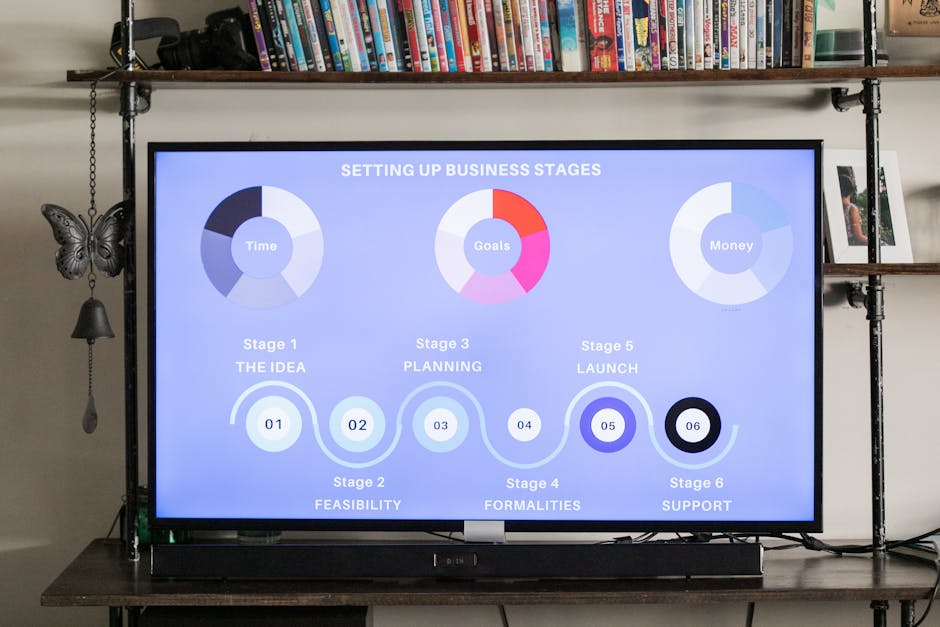
Throughout this entire lifecycle, two elements remain constant: executive sponsorship and stakeholder alignment. Without leadership buy-in and cross-departmental cooperation, even the most technically perfect implementation can stumble.
Phase 1 – Findy & Planning
The foundation of your NetSuite ERP implementation starts here. This findy phase is where we figure out what you need and how to get there.
During this phase, your team will work on requirements mapping—documenting your current business processes and identifying pain points that NetSuite can solve. It’s not just about what isn’t working, but also understanding what’s working well and should be preserved.
A thorough process audit compares your existing workflows against NetSuite best practices. This is your opportunity to improve operations, not just digitize broken processes. As one client told us, “We didn’t realize how many unnecessary steps we had until we mapped everything out.”
You’ll also establish KPI definitions that will measure implementation success. Whether it’s reducing month-end close by 50% or improving inventory accuracy to 99.5%, these metrics create accountability and focus.
Creating a risk register helps identify potential roadblocks before they appear. From data quality concerns to resource availability, naming these risks early means you can develop mitigation strategies proactively.
Finally, forming a steering committee with representatives from across your organization ensures decisions are made with input from all affected departments. This cross-functional team becomes your implementation’s north star, guiding the project through inevitable challenges.
While this phase typically requires 50-150 consulting hours, it’s time well spent. As we often tell our clients: “Measure twice, cut once.” A rushed planning phase almost always leads to costly corrections later.
Phase 2 – System Design & Prototype
With requirements in hand, we move to designing how NetSuite will work for your specific business needs. This is where your future system begins taking shape.
Configuration workshops bring together your subject matter experts and our NetSuite specialists to map your processes to the system. These collaborative sessions often spark valuable discussions about how to improve workflows. We’ve seen lightbulb moments when teams realize there’s a simpler way to handle processes they’ve been struggling with for years.
The gap analysis identifies where standard NetSuite functionality doesn’t quite match your requirements. For each gap, we’ll decide together: Should we adapt your process to fit NetSuite’s best practices? Configure the system using standard tools? Or develop custom functionality?
Defining your minimal viable product (MVP) helps focus the implementation on what’s truly essential for go-live. This pragmatic approach ensures you get up and running with critical functionality while planning for future improvements.
We’ll also design role permissions custom to your organizational structure, ensuring everyone has access to what they need—and only what they need—to do their jobs effectively.
One piece of advice we share with all clients: Be open to new approaches rather than simply replicating your old system’s workflows. NetSuite embodies industry best practices developed over decades, and embracing these can deliver unexpected benefits.
Phase 3 – Build & Configure
Now the technical work begins in earnest. During this phase, your NetSuite ERP implementation moves from concept to reality as we configure and customize the system to your specifications.
Module setup forms the backbone of your implementation. We’ll configure your financial structure, inventory settings, order management workflows, and other core modules according to the approved design.
For your unique business needs, we’ll create custom fields and forms that capture and display information specific to your operations. Whether it’s tracking specialized manufacturing data or customer-specific attributes, these customizations make NetSuite truly yours.
Workflows and automation eliminate manual steps and enforce business rules. These digital guardrails ensure consistency and reduce the risk of errors, freeing your team to focus on value-added activities instead of repetitive tasks.
When standard configuration can’t meet specific requirements, SuiteScript development extends NetSuite’s capabilities. Our developers create custom functionality that bridges gaps while maintaining system integrity.
Building integrations connects NetSuite with your other business systems—whether it’s your e-commerce platform, CRM, or industry-specific applications—creating a unified digital ecosystem.
Throughout this phase, we validate configurations in a sandbox environment before deploying to production. This lets you test and refine without affecting live operations.
One principle we emphasize: Limit customizations where possible. Native NetSuite functionality is automatically maintained through twice-yearly updates, while heavy customization can make upgrades more complex and costly. When we can adjust a process instead of customizing code, that’s usually the more sustainable path.
Phase 4 – Data Migration & Testing
With your system configured, it’s time to populate it with your business data and ensure everything works as expected.
Data cleansing is often underestimated but critical to success. We’ll help you identify and correct issues in your legacy data before migration. This might mean removing duplicates, standardizing formats, or filling in missing information. Clean data means confident decision-making in your new system.
The data mapping process defines how information from your old systems translates to NetSuite fields. This technical exercise requires both system knowledge and business context to ensure data lands in the right places with the right formatting.
User acceptance testing (UAT) puts your configured system through its paces. Your team will run real-world scenarios to verify that NetSuite handles your business processes correctly. This hands-on experience also helps users become familiar with the system before go-live.
For critical financial processes, we often recommend parallel runs—operating both old and new systems simultaneously for a period to compare results and ensure accuracy. This extra validation step provides peace of mind for your finance team.
As issues are identified and resolved, regression testing confirms that fixes don’t create new problems elsewhere in the system. This methodical approach maintains the integrity of your implementation.
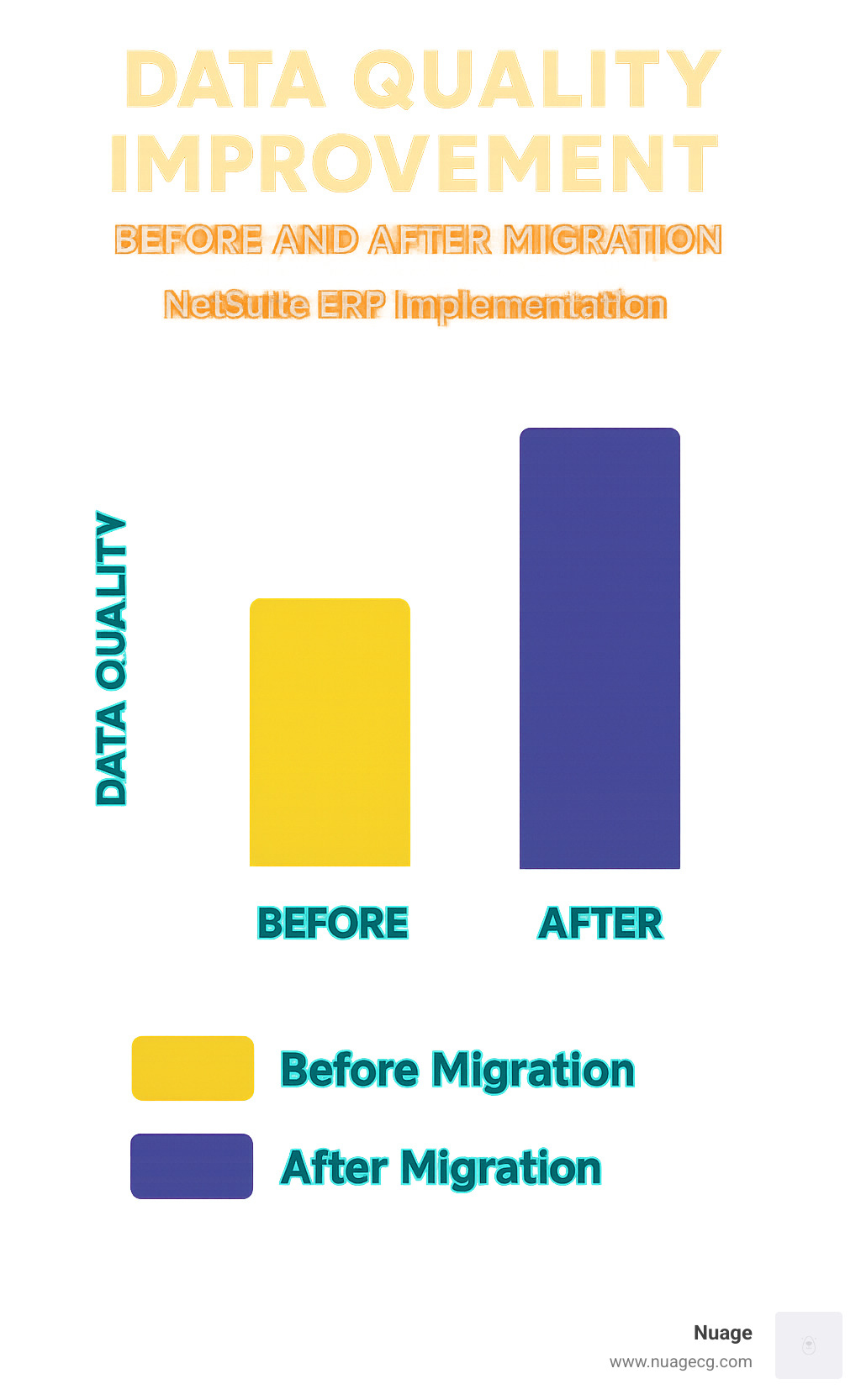
Phase 5 – Go-Live & Support
The moment of truth arrives! Go-live day transforms months of preparation into operational reality, but it’s not the end of your journey—it’s the beginning of a new way of working.
A detailed cut-over checklist guides the transition from legacy systems to NetSuite. This covers everything from final data migration to user readiness checks, ensuring no detail is overlooked during this critical transition.
The first few weeks after launch require hypercare support—an intensive support period where our team provides rapid response to questions and issues. This extra attention helps users steer their learning curve while maintaining business continuity.
An effective issue triage process categorizes and prioritizes any problems that emerge, ensuring critical issues receive immediate attention while tracking all feedback for resolution.
Based on real-world usage, post-go-live tuning refines configurations, reports, and workflows. These adjustments optimize the system based on actual user experience rather than theoretical design.
Finally, we’ll help you establish a continuous improvement roadmap that extends beyond implementation. This forward-looking plan helps you take full advantage of NetSuite’s capabilities and adapt as your business evolves.
Some businesses choose a phased approach, deploying modules incrementally, while others prefer a full go-live. Either way, providing robust support during the transition is essential for user adoption and confidence.
Ready to see how NetSuite can transform your business operations? Schedule a Free Product Tour to explore the platform’s capabilities and how they align with your specific needs.
Step-by-Step Checklist & Implementation Team Roles
A successful NetSuite ERP implementation isn’t just about following a process—it’s about bringing together the right people with clear responsibilities. Think of it as orchestrating a complex performance where everyone needs to play their part at just the right time.
Most implementation methodologies break down the journey into four fundamental stages:
- Engage: This is where we assemble our team, establish how decisions will be made, and clearly define what we’re trying to accomplish.
- Drive: Now we’re creating detailed blueprints, configuring NetSuite to match your needs, and preparing for the big data move.
- Enable: Time to test everything thoroughly, train your people, and make final preparations before going live.
- Convert: The moment of truth—switching over to the new system, providing intensive support, and transitioning to normal operations.
Let’s walk through what needs to happen at each step of the way to ensure your implementation stays on track.
Detailed Task List
Your implementation journey begins with a proper kickoff meeting where everyone meets, understands their roles, and aligns on how you’ll communicate throughout the project. This sets the tone for everything that follows.
Next comes mapping out your timeline with clear milestones. As one client told us, “Having visible milestones helped us celebrate small wins and maintain momentum through the challenging parts of our implementation.”
Resource allocation deserves special attention. Your project manager will likely become fully dedicated to the implementation, while other team members need protected time to fulfill their project responsibilities alongside their day jobs.
Scope control is perhaps the most critical success factor. We’ve seen too many projects derailed by “just one more feature” requests that compound into significant delays and budget overruns. Establish a clear process for evaluating and approving changes to prevent this common pitfall.
Your communication cadence should include regular status meetings, progress reports everyone can understand, and clear escalation procedures when issues arise. Transparency is your friend—problems identified early can often be solved before they impact your timeline.
Don’t forget to develop a solid backup and continuity strategy. Even in the cloud, you need plans for data protection and business continuity during the transition phase.
Finally, your change management plan needs to identify key stakeholders, assess how they’ll be impacted, and develop strategies to help everyone adapt. This includes thoughtful communication, targeted training, and approaches for managing resistance (which is a natural part of any significant change).
For a successful implementation, you’ll need these key roles filled with the right people:
Project Manager: This person keeps everything moving, coordinates resources, and ensures deliverables stay on track. They’re the day-to-day leader who makes the plan come to life.
Executive Sponsor: Your senior leader who champions the project, secures resources when needed, clears organizational roadblocks, and makes key decisions. Their visible support signals the importance of the project to everyone.
Report Writer: This specialist focuses on creating the reports and dashboards that will deliver the business intelligence you need. They translate your information needs into actionable insights.
Super Users: These are your internal champions—end users who develop deep expertise in NetSuite and help their colleagues adapt. They’re invaluable during testing, training, and the critical early days after go-live.
Cross-Functional SMEs: Subject matter experts from different departments provide the domain knowledge that ensures NetSuite meets the needs of finance, operations, sales, and other areas. They validate that the system will actually work for the people using it.
“The strongest implementations we’ve seen always have diverse, cross-departmental teams,” notes our implementation director. “When finance, operations, and sales all have a voice in the process, the result works for everyone—not just one department.”
For a deeper dive into proven approaches, check out our NetSuite Implementation Best Practices guide.
NetSuite ERP Implementation Timeline
When clients ask, “How long will this take?” the honest answer is, “It depends on your unique situation.” However, we can share some helpful benchmarks based on real-world implementations:
Midsize companies ($100-250 million revenue) typically complete their implementations in about 6.6 months on average. They often have the sweet spot of resources and focused scope.
Small to medium businesses can sometimes achieve a streamlined implementation in as little as 90 days, especially when they commit to using NetSuite’s standard processes with minimal customization.
Enterprise organizations (over $25 billion revenue) usually need at least 12 months, given their complex processes, data volume, and organizational change management needs.
What might extend your timeline? The most common factor is resource constraints, accounting for 56.1% of project delays. When your team members are juggling implementation responsibilities with their regular jobs, progress inevitably slows.
Scope creep is another timeline killer. Starting with a focused scope and sticking to it is crucial for meeting your target dates.
The complexity and quality of your data will significantly impact your timeline. Organizations with messy, inconsistent data across multiple systems typically need more time for successful migration.
Extensive customization not only extends development time but also multiplies testing requirements. As one of our consultants puts it, “Every custom script is something else that can break during testing.”
The good news? Cloud-based implementations like NetSuite typically move faster than traditional on-premises ERP projects. You get to skip all the hardware procurement and infrastructure setup, focusing instead on the configuration, data, and people aspects of the implementation.
For an eye-opening look at what happens when ERP implementations go wrong, this CIO article on ERP disasters offers valuable lessons.
NetSuite ERP Implementation Cost Factors
Understanding the cost factors for your NetSuite ERP implementation helps you budget realistically and avoid unpleasant surprises. While every implementation is unique, these are the key components that make up your total investment:
Licensing forms your foundation cost—NetSuite’s subscription model bases fees on your selected modules and user count. Think of this as your ongoing operating expense that continues after implementation.
Consulting hours typically range between $150-$250 per hour, with total costs determined by your implementation’s complexity. A simple implementation might need 100-200 hours, while complex projects can require 1,000+ hours of consulting time.
Data migration costs vary dramatically based on complexity. Moving from QuickBooks might cost just a few thousand dollars, while migrating from legacy enterprise systems with decades of data can exceed $10,000. Data cleansing is an investment that pays dividends in system performance and user trust.
Customization work typically ranges from $140-$300 per hour for development labor. While most organizations benefit from some customization, each custom element adds to both initial and ongoing maintenance costs.
Training is an investment in your people that directly impacts adoption success. Budget for both administrator and end-user training, with refresher sessions as part of your ongoing plan.
Integration with other systems represents another significant cost variable. Simple connectors might cost a few thousand dollars annually, while complex integration platforms can run into tens of thousands plus implementation fees.
Industry data suggests a median project cost around $450,000, but we’ve seen successful small business implementations starting around $25,000, while complex enterprise deployments can exceed $1 million.
One advantage of choosing NetSuite is avoiding the substantial hardware and infrastructure costs of traditional on-premises ERP systems. This creates both immediate and long-term savings that should factor into your total cost of ownership calculations.
For more detailed information about what drives implementation costs and how to manage them effectively, visit our comprehensive NetSuite Implementation Cost guide.
Risk Management, Adoption & Post-Launch Optimization
Let’s face it – even the most carefully planned NetSuite ERP implementation will face challenges. It’s not about avoiding all risks (that’s impossible), but rather about anticipating and managing them effectively.
Think of your implementation journey like sailing a ship across the ocean. Even with the best maps and equipment, you’ll encounter unexpected weather. The key is how you respond when the waves get choppy.
Four common implementation storms you’ll likely weather include:
Scope creep often sneaks in quietly. What starts as “just one more small feature” multiplies until your project timeline stretches beyond recognition. This is the number one reason implementations go over budget and past deadlines.
User resistance can manifest as anything from quiet sabotage to vocal opposition. People don’t naturally resist change – they resist loss. When team members fear losing status, competence, or comfort, they’ll be reluctant to accept new systems.
Data quality issues become painfully apparent during migration. As one client told me, “We didn’t know how bad our data was until we tried to move it.” Poor data undermines both system functionality and user trust.
Integration errors can create frustrating disconnects between NetSuite and your other business systems. When data doesn’t flow properly between platforms, processes break down and finger-pointing begins.
Digital Adoption Platforms (DAP) have become valuable allies in the battle for successful implementation. These tools provide real-time guidance directly within NetSuite, acting like a GPS for users navigating unfamiliar territory. They reduce training costs while significantly improving user confidence.
But the work doesn’t end at go-live. Post-launch optimization determines whether your NetSuite ERP implementation delivers lasting value or slowly degrades into digital deadweight.

Mitigating Common Challenges
Successful organizations tackle implementation challenges head-on with proven strategies:
Securing executive buy-in isn’t just about getting initial approval – it requires ongoing engagement. Your C-suite needs to visibly champion the project from kickoff through stabilization. As we’ve seen with our manufacturing clients, when executives roll up their sleeves and engage with the process, teams follow their lead.
Implementing a phased rollout breaks the mountain into manageable hills. Rather than overwhelming users with complete system change, consider deploying core financial functions first, then expanding to inventory, then eCommerce. Each success builds momentum for the next phase.
Building in buffer time acknowledges reality – surprises happen. We typically recommend adding 20-25% to initial timeline estimates, especially for data migration and user acceptance testing phases. This isn’t padding; it’s pragmatic planning.
Establishing a contingency fund provides financial flexibility when unexpected challenges arise. Setting aside 10-15% of your implementation budget as reserve has saved countless projects from painful compromises when the unexpected occurs.
Maintaining parallel systems during the initial post-go-live period provides peace of mind and verification. While running dual systems temporarily increases workload, it creates a safety net that often justifies the investment.
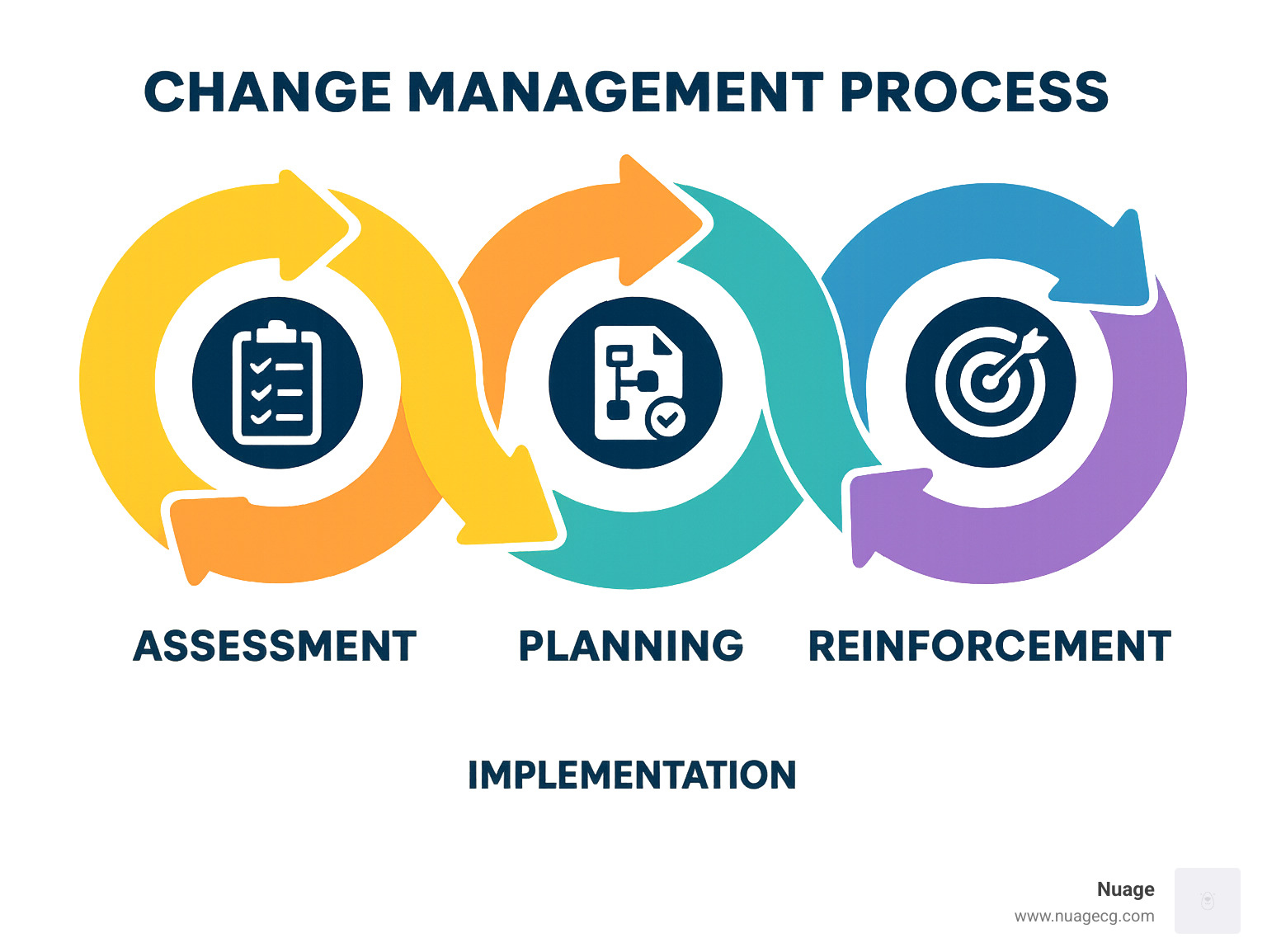
Driving User Adoption & Continuous Improvement
The truth many implementation teams find too late: technical success doesn’t guarantee business success. User adoption determines whether your NetSuite ERP implementation delivers ROI or gathers digital dust.
Creating role-based dashboards transforms the user experience from overwhelming to empowering. When your warehouse manager logs in and immediately sees exactly what matters to them – without digging through irrelevant screens – adoption accelerates naturally.
Providing in-app guidance addresses the “forgetting curve” that plagues traditional training approaches. When users can access help precisely when and where they need it, frustration decreases and confidence grows.
Developing a power users network distributes knowledge and support throughout your organization. These departmental champions become the first line of assistance for colleagues and valuable feedback sources for your implementation team.
Establishing feedback loops transforms users from passive recipients to active participants. Simple mechanisms for reporting issues and suggesting improvements give users ownership stake in system success. At Nuage, we’ve seen how regular user feedback sessions can uncover workflow improvements that deliver substantial efficiency gains.
Conducting quarterly health checks prevents small issues from becoming major problems. These structured reviews examine system performance, user adoption metrics, and business outcomes to identify optimization opportunities.
As one manufacturing client perfectly summarized: “Going live was just the beginning. The real value came from how we continuously refined the system based on what we learned actually using it.”
For more comprehensive guidance on implementation best practices and maximizing your NetSuite investment, explore our detailed NetSuite Implementation Guide.
Frequently Asked Questions about NetSuite ERP Implementation
How hard is it to implement NetSuite?
The truth about NetSuite ERP implementation difficulty? It’s like climbing a mountain – challenging but absolutely doable with the right equipment and guides.
The complexity really depends on your starting point. If your business has straightforward processes and clean data, you’re looking at a much smoother journey. On the flip side, if you’re juggling multiple business entities, international operations, or highly specialized workflows, you’ll face more twists and turns along the way.
We’ve guided hundreds of businesses through this journey at Nuage, and we’ve found that implementation difficulty boils down to four key factors:
Business complexity makes a huge difference – a single-entity retail business typically has a simpler path than a multi-national manufacturer with complex supply chains.
Data quality is often the hidden challenge. Clean, organized data means a smooth migration, while messy, incomplete records can add weeks to your timeline and cause headaches during testing.
Customization needs play a major role too. Sticking with NetSuite’s standard functionality keeps things simpler, while extensive customizations add complexity (though sometimes they’re worth it for your unique processes).
Organizational readiness might be the most important factor of all. When leadership is fully on board, objectives are crystal clear, and your team accepts change, even complex implementations tend to stay on track.
After 20+ years in the ERP world, we’ve learned that with structured methodology and experienced guidance, even the most complex implementations can proceed without major drama.
What is the best time for a business to start?
Timing your NetSuite ERP implementation is a bit like planning when to renovate your house – there’s rarely a “perfect” time, but some moments definitely make more sense than others.
Many businesses come to us when they’re experiencing clear symptoms that their current systems can’t keep up – manual workarounds are multiplying, spreadsheets are becoming unwieldy, or they’re making decisions based on week-old data. But ideally, you want to start before these pain points become critical business constraints.
Watch for these signals that it’s time to make your move:
Your current systems are showing their limitations when basic tasks become frustrating or impossible. When your team starts saying “the system won’t let us do that” too often, it’s time.
Before major growth initiatives is an ideal window – whether you’re expanding geographically, launching new product lines, or changing business models. It’s much easier to scale with systems already designed to handle the complexity.
When compliance demands become more stringent and your current reporting capabilities fall short, a modern ERP like NetSuite can provide the control and visibility you need.
If your team is making decisions based on outdated or incomplete information, the real-time visibility NetSuite provides can be transformative.
Resource availability matters too – implementation requires time and attention from key team members, so look for periods when they can dedicate focus to the project.
One practical tip: avoid scheduling your go-live during your busiest seasons. A retailer wouldn’t want to launch in November, just as a manufacturer might avoid their peak production period.
How do you measure post-implementation ROI?
Measuring the return on your NetSuite ERP implementation investment is both art and science. The most successful companies track both hard numbers and qualitative improvements.
On the quantitative side, we help clients establish baseline measurements before implementation and then track specific improvements afterward. This creates concrete evidence of the system’s value.
A food manufacturer we worked with saw their monthly financial close process shrink from 15 days to just 5 days after implementing NetSuite. Another client, in industrial manufacturing, reduced inventory costs by 30% through better visibility and forecasting. These tangible benefits created ROI calculations that more than justified their implementation investments.
Beyond the numbers, we encourage tracking qualitative improvements that might be harder to measure but are just as valuable:
Decision-making agility improves dramatically when leaders have real-time access to accurate information. One client told us, “We’re no longer managing by looking in the rearview mirror.”
Employee satisfaction often rises as frustrating manual tasks disappear and people can focus on more meaningful work. We’ve seen this reflected in reduced turnover and improved engagement scores.
Scalability becomes a competitive advantage – the ability to handle business growth without proportionally increasing administrative overhead means you can seize opportunities faster than competitors.
Compliance and control improvements reduce risk and often lead to better audit outcomes and stronger stakeholder confidence.
The most compelling ROI stories combine these elements – showing how NetSuite delivered both immediate operational improvements and longer-term strategic advantages. At Nuage, we’ve seen businesses transform not just their operations but their entire trajectory after a successful implementation.
For a personalized assessment of what ROI might look like for your business, contact our NetSuite experts for a conversation about your specific needs and opportunities.
Conclusion
Starting on a NetSuite ERP implementation journey is like building a new foundation for your business. When done right, it transforms how your entire organization operates, giving you the visibility and efficiency modern businesses need to thrive.
Throughout this guide, we’ve walked through each step of the implementation process, from initial planning to post-launch optimization. Now, let’s bring it all together with the essential elements that make implementation successful.
First and foremost, never underestimate the power of thorough planning. The time you invest upfront in the findy phase pays enormous dividends later. Clear requirements, realistic timelines, and well-defined success metrics create the roadmap that will guide your entire project.
Your implementation team can make or break your success. Strong executive sponsorship provides the authority and resources needed to overcome obstacles. A dedicated project manager keeps everything on track, while engaged subject matter experts ensure the system meets real-world business needs.
One piece of advice we share with all our clients at Nuage: resist the temptation to customize everything at once! Start with core functionality that delivers immediate value, then plan for phased improvements over time. This approach reduces risk and accelerates time-to-value.
Your new system is only as good as the data it contains. Clean, accurate data is the lifeblood of your NetSuite implementation. Take the time to validate and cleanse your information before migration—your future self will thank you.
User adoption is where many implementations succeed or fail. You can have the perfect technical setup, but if your team doesn’t accept the new system, you won’t realize the benefits. Invest in comprehensive training, provide ongoing support, and actively manage the change process to help users not just accept but accept NetSuite.
The go-live is just the beginning of your NetSuite journey. The real value comes from continuous optimization—refining processes, improving configurations, and leveraging new features as they become available through NetSuite‘s regular updates.
At Nuage, we bring over 20 years of ERP expertise to every implementation project. Our team has guided countless manufacturing and food and beverage companies through successful NetSuite journeys, delivering real business improvements and measurable ROI.
We understand that your business isn’t like any other. You have unique challenges, priorities, and goals that require a custom approach. That’s why we focus on your specific needs rather than pushing a standardized solution that might not fit.
Whether you’re just starting to explore what NetSuite can do for your business or you’re ready to kick off your implementation project, we’re here to help. With offices in Manhattan Beach, CA, and Ponte Vedra, FL, our team serves clients nationwide with the expertise and support needed for a smooth, successful implementation.
Ready to transform your business with NetSuite? Contact our NetSuite experts today for a custom implementation roadmap custom to your unique business needs.
